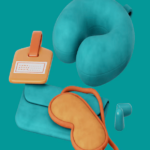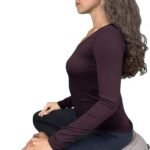I. The Importance of Meditation Cushions for Posture and Comfort to Enhance Focus
Finding the best meditation cushions for posture and comfort can make a significant difference in your meditation practice. These cushions help support your spine and hips, allowing you to maintain proper posture and stay focused longer.
In this guide, we’ll cover top cushion types to suit different needs and preferences, from beginners to seasoned meditators.
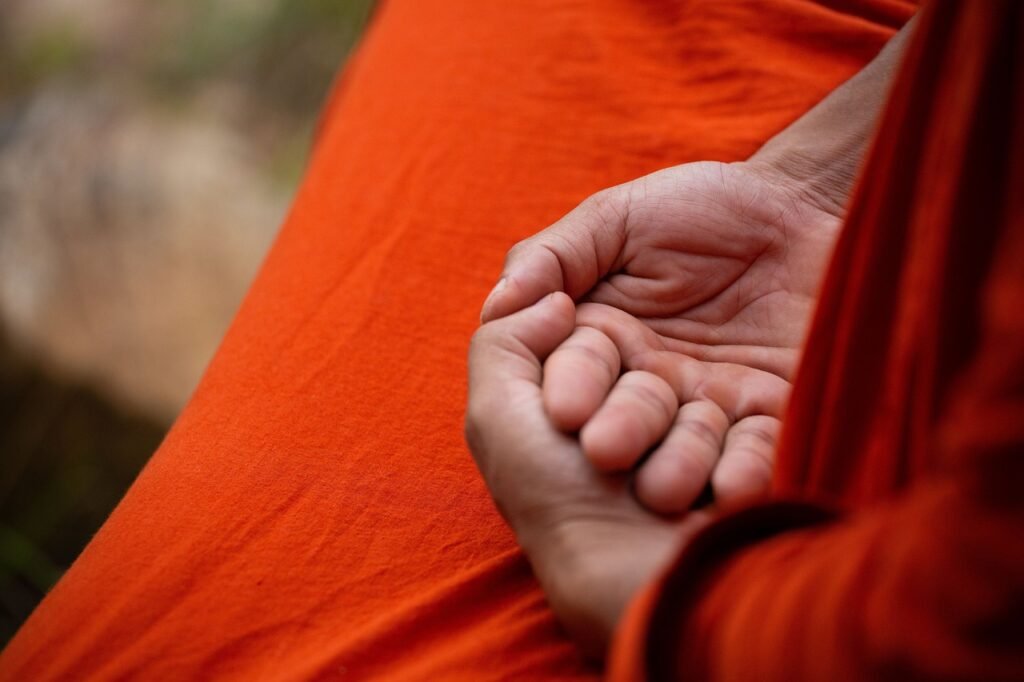
A. Why Good Posture is Key in Meditation
A strong meditation practice begins with posture. The right sitting position encourages better breathing, helps prevent distractions from discomfort, and supports longer, focused sessions.
B. How Meditation Cushions Enhance Your Practice
Meditation cushions offer essential support to the spine, hips, and legs, helping you maintain proper alignment and focus on mindfulness without physical strain. The right cushion improves overall comfort and encourages longer, deeper meditation.
C. Key Factors When Choosing a Meditation Cushion
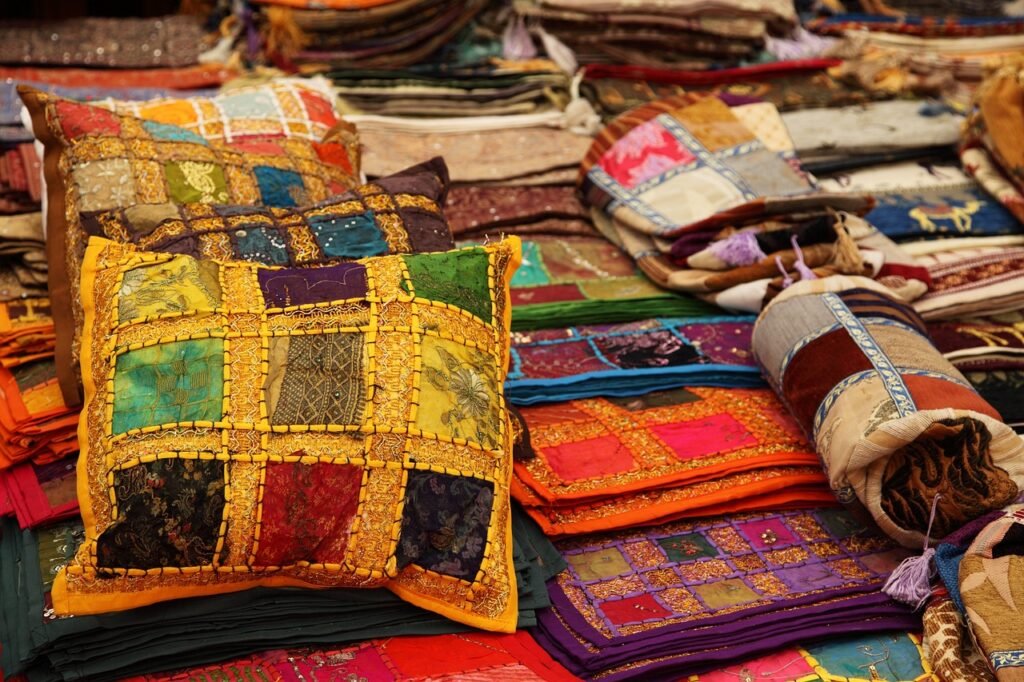
Height and Firmness:
Ideal cushions provide just enough height to promote natural spine alignment and relieve pressure on the knees and hips.
Shape and Size:
The size and shape (such as zafu, zabuton, or crescent) cater to different sitting styles and preferences.
Material and Filling:
Each type offers unique support, from buckwheat for firmness to cotton for softness.
Ease of Cleaning:
Consider cushions with removable, washable covers for easy maintenance.
II. Types of Meditation Cushions for Comfort and Alignment
1. Zafu Meditation Cushions
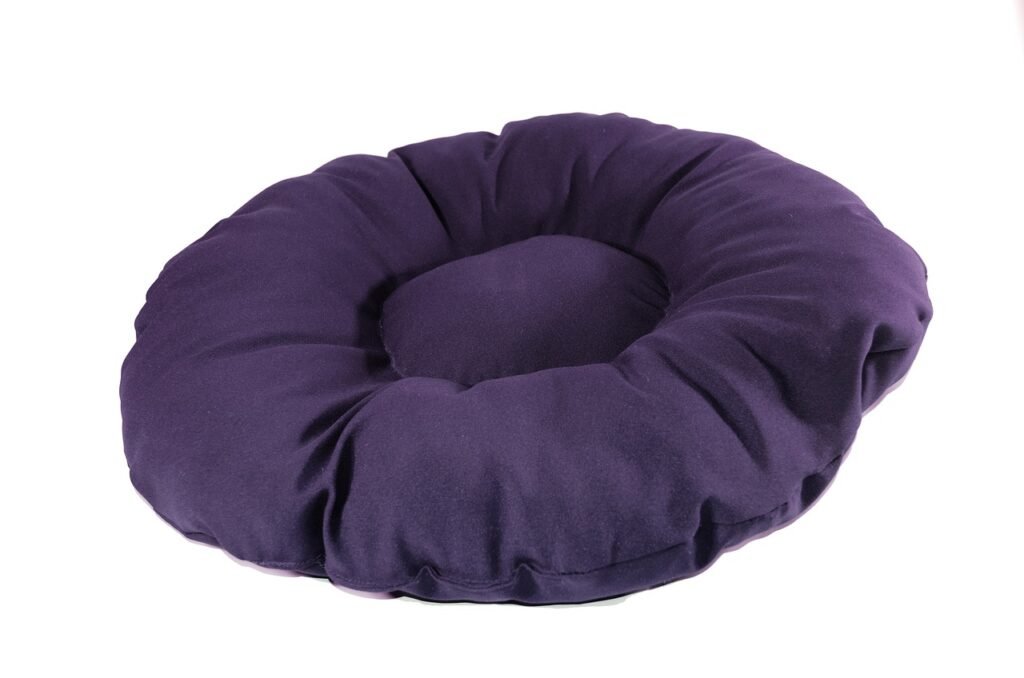
Zafu cushions are typically round and about 5-8 inches high. They’re well-suited for cross-legged positions, supporting hip tilt and spine alignment for a comfortable, upright position.
Benefits:
- Elevates hips: Helps maintain a natural spinal alignment.
- Comfortable: Provides firm support, reducing pressure on legs and ankles.
- Portable: Often comes with a handle for easy transport.
- Versatile: Can be used for meditation, yoga, or as a regular cushion.
Drawbacks:
- May not suit everyone: Some people might find the firmness uncomfortable.
- Requires proper positioning: Needs to be placed correctly to achieve the desired posture.
2. Zabuton Meditation Mats

Zabutons are flatter, wider cushions often paired with a zafu. They provide extra support under the knees and ankles, ideal for extended sessions.
Benefits:
- Cushioning: Provides extra comfort for knees, ankles, and feet.
- Supportive: Helps maintain proper alignment of the spine and hips.
- Insulating: Keeps you warm by insulating from cold floors.
- Durable: Typically made from sturdy materials.
Drawbacks:
- Bulky: Can be large and heavy, making it less portable.
- May flatten over time: Requires regular fluffing to maintain its shape.
3. Crescent-Shaped Cushions
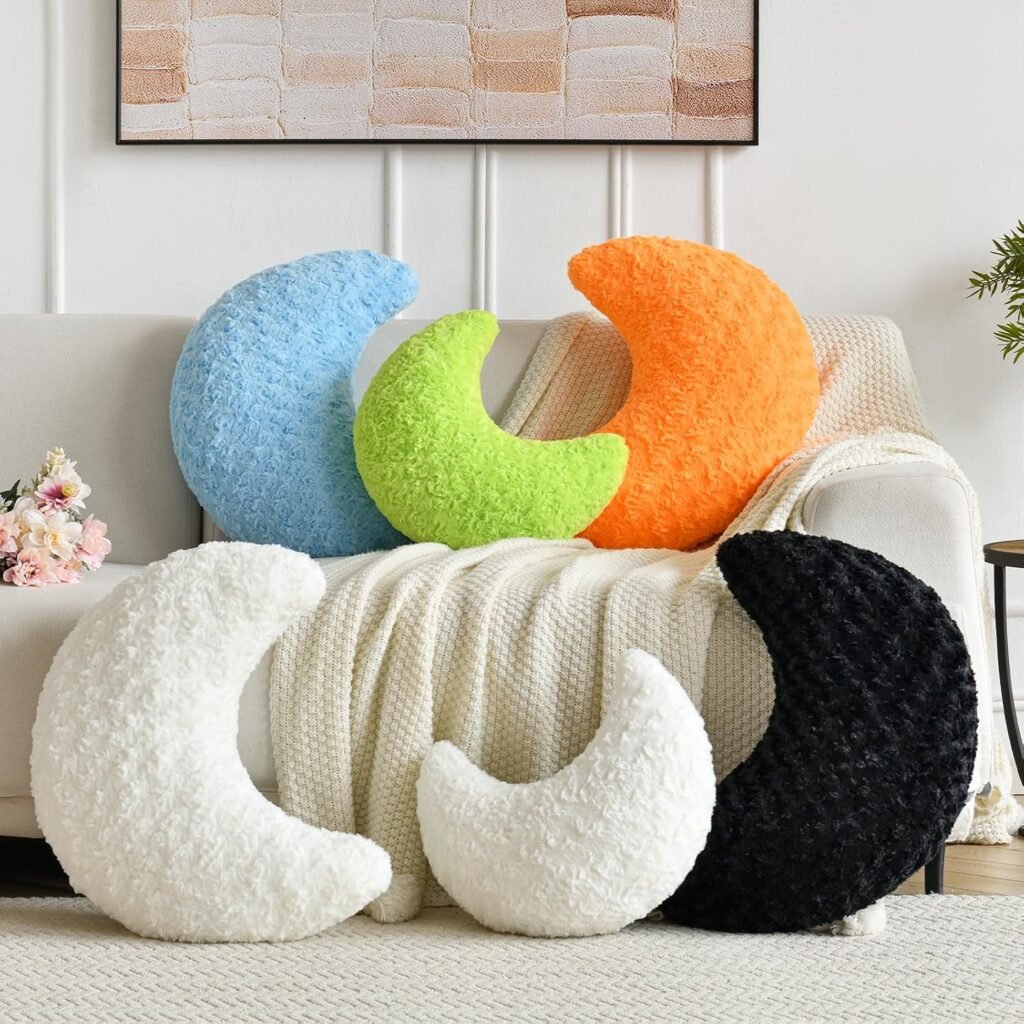
Curved to align with the body, crescent-shaped cushions offer additional hip support, perfect for those with knee or hip concerns.
Benefits:
- Supportive: Provides extra support for thighs and lower back.
- Comfortable: Helps prevent legs from falling asleep during long sessions.
- Ergonomic: Designed to contour to the body for better posture.
Drawbacks:
- Less versatile: Primarily designed for meditation, not as multi-functional as other cushions.
- May be too large: Can take up more space compared to round cushions.
4. V-Shaped and Travel Cushions
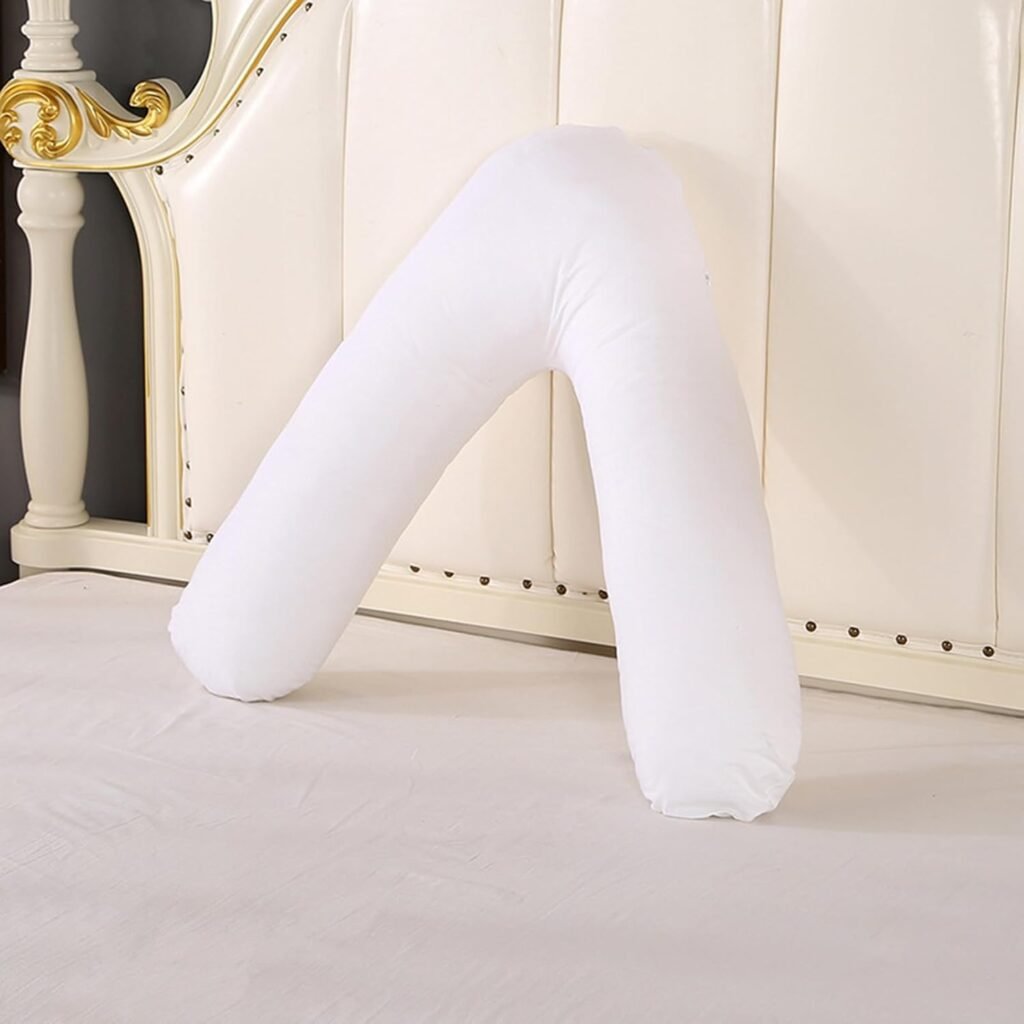
V-shaped options support various positions, while travel cushions offer lightweight, compact solutions for meditating on the go.
Benefits:
- Portable: Compact and easy to carry, ideal for travel.
- Adjustable: Often comes with removable filling for customizable firmness.
- Supportive: Aligns the spine and provides thigh support.
Drawbacks:
- Less cushioning: May not provide as much padding as other cushions.
- Smaller size: Might not be suitable for extended meditation sessions.
III. Best Meditation Cushion Materials: Comparing Buckwheat, Cotton, and Kapok

1. Buckwheat-Filled Cushions
These cushions adjust to body contours, providing firm support that’s customizable by adding or removing fill. They are long-lasting, but heavier than other materials.
2. Cotton and Foam Cushions
Softer and lighter, these cushions are more portable but may lack the long-term support needed for lengthy sessions.
3. Kapok-Filled Cushions
Lightweight and firm, kapok offers a balance of support and comfort. It’s also naturally hypoallergenic, making it an eco-friendly, allergen-free choice.
IV. Top 10 Meditation Cushions Comparison Guide & Review: Finding the Perfect Fit
A. Cushion 1: Zen Zafu Meditation Cushion
- Features: Buckwheat fill, removable cover, handle for easy carrying
- Benefits: Adjustable height, durable, easy to clean
B. Cushion 2: Mindful and Modern Crescent Cushion
- Features: Memory foam core, velvet cover, crescent shape
- Benefits: Great for hip and knee comfort, stylish design
C. Cushion 3: Brentwood Home Crystal Cove Meditation Pillow
- Features: Buckwheat and kapok fill, certified organic cotton cover
- Benefits: Eco-friendly, adjustable firmness
D. Cushion 4: Hugger Mugger V-Shaped Cushion
- Features: V-shape design, cotton batting fill
- Benefits: Supports various sitting positions, lightweight
E. Cushion 5: Peace Yoga Zafu Meditation Cushion
- Features: Buckwheat fill, carry handle, various colors and patterns
- Benefits: Affordable, good for beginners
F. Cushion 6: Seat Of Your Soul Meditation Cushion Set
- Features: Includes zafu and zabuton, organic cotton covers
- Benefits: Complete set for ultimate comfort
G. Cushion 7: Waterglider International Zafu
- Features: Organic cotton twill cover, buckwheat hull fill
- Benefits: Handmade in USA, durable construction
H. Cushion 8: Gaiam Meditation Cushion
- Features: Crescent shape, cotton cover, lightweight filling
- Benefits: Good for travel, affordable option
I. Cushion 9: Bean Products Yoga Meditation Cushion
- Features: Available in multiple sizes, organic materials
- Benefits: Customizable options, eco-friendly
J. Cushion 10: Still Sitting Zafu Cushion
- Features: Traditional pleated design, sturdy construction
- Benefits: Long-lasting, supports authentic meditation posture
Table: Meditation Cushion Comparison Guide
| Cushion Type | Best For | Key Features | Material Options |
| Zafu | Cross-legged positions | Elevates hips for spine alignment | Buckwheat, cotton |
| Zabuton | Extra knee and ankle support | Wide, padded mat | Cotton |
| Crescent | Hip and knee relief | Curved shape for body contour support | Memory foam, kapok |
| V-Shaped | Varied sitting positions | V-shape design allows diverse postures | Cotton batting |
| Travel Cushion | Portable meditation | Lightweight and compact | Foam, cotton |
V. Factors to Consider When Choosing a Meditation Cushion
A. Height and firmness
The right height helps maintain proper spine alignment. Firmness is a personal preferrence, but should provide enough support for your sitting bones.
B. Size and portability
Consider where you’ll be using the cushion. If you travel often, a smaller, lighter cushion might be best.
C. Durability and maintenance
Look for cushions with removable, washable covers. Durable materials will ensure your cushion lasts for years.
Table: Choosing a Meditation Cushion
| Factors | Considerations |
| Height | Higher cushions are best for cross-legged positions, while lower ones may suit kneeling postures |
| Size and Portability | If you travel, look for cushions that are smaller or come with a handle. |
| Durability and Maintenance | Opt for removable, machine-washable covers for longevity. |
VI. Tips for Using Your Meditation Cushion Effectively
1. Optimal Sitting Position
Sit on the front edge of the cushion with knees lower than hips to encourage a natural spine curve. This position is best for breathing and focus.
2. Adjusting the cushion for support
Experiment with cushion height and positioning until you find a comfortable alignment. Some meditators combine a zafu with a zabuton for added knee support.
3. Use Multiple Cushions for Custom Comfort
Layering cushions can improve comfort by supporting the knees and hips, especially for extended sessions. Try using a zafu on top of a zabuton for extra knee and ankle support.
VII. Caring for Your Meditation Cushion
1. Cleaning and Washing instructions
Most cushions come with removable covers that can be machine-washed. For buckwheat cushions, empty the hulls before washing.
2. Storage Tips & recommendations
Store cushions in a dry, ventilated area and rotate them regularly to ensure even wear. For buckwheat cushions, refresh the fill every couple of years.
3. Extending Cushion life of your cushion
Avoid placing cushions in direct sunlight for prolonged periods, as this can fade and weaken the fabric. Rotate your cushion regularly to distribute wear evenly. For buckwheat-filled cushions, refresh the hulls every few years.
VIII. Alternative Seating Options for Meditation
1. Meditation Benches
Kneeling on a meditation bench relieves strain on the legs and is a comfortable option for those who prefer a non-cross-legged position and can be a good option if you prefer kneeling postures.
2. Meditation Chairs
If you need back support, consider a meditation chair that allows upright sitting without the discomfort of a regular chair.
3. Floor Mats and Yoga Mats
Floor mats provide a lightweight, portable option suitable for shorter sessions or mindful stretches.
IX. The Benefits of Using a Meditation Cushion
Enhanced Posture and Alignment
A good cushion improves your spine alignment, reducing tension in the back and neck.
Reduced physical discomfort during long sessions
Cushions provide support and padding, making it easier to sit for longer periods without discomfort.
Enhanced Focus and Concentration
When you’re physically comfortable, it’s easier to focus on your meditation practice rather than bodily discomfort
X. Conclusion
Choosing the best meditation cushions for posture and comfort can transform your meditation experience by promoting proper alignment and reducing physical strain. By investing in a cushion tailored to your needs, you’re setting the foundation for a more comfortable, focused, and rewarding practice.
XI. Call to Action
Discover Your Ideal Meditation Cushion Today!
With so many options available, finding the right cushion can elevate your practice. Explore different styles and materials to find the best meditation cushion for ultimate comfort and support.
May Like to Explore More:
Anti-Allergy Pillows Aromatherapy Pillows
Bamboo Pillow Natural Latex Pillows
Organic Cotton Pillows Recycled Material Pillows
XII. FAQs
Q1. What’s the difference between zafu and zabuton cushions?
A zafu is a small, round cushion providing hip support for cross-legged sitting. A zabuton is a larger, flatter mat often used under a zafu for additional knee and ankle padding.
Q2. Can meditation cushions improve back pain?
Yes, cushions help maintain spine alignment, which may relieve strain on the lower back. For chronic pain, choose a cushion with sufficient height and firmness for support.
Q3. Which meditation cushion is best for beginners?
A zafu or crescent cushion is a versatile option for beginners, as it provides balanced support for cross-legged positions and fits different postures comfortably.
Q4. Are there hypoallergenic meditation cushions?
Yes, kapok and organic cotton cushions are hypoallergenic options, suitable for those with allergies. Choose cushions labeled as free from synthetic materials.
Q5. How often should I replace my meditation cushion?
With proper care, high-quality cushions last several years. Replace them if you notice discomfort or if the filling no longer provides adequate support.
Q6. Can I use a regular pillow for meditation?
While a regular pillow may work short-term, meditation cushions are specifically designed to support meditation postures, making them a better choice for comfort and alignment.


